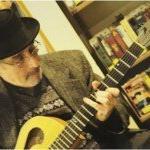On November 11, 1918, a 17-year-old Louis “Dipper” Armstrong, driving a coal cart around his down-and-out New Orleans neighborhood, heard a commotion. World War I had ended, and cars were dragging tin cans down St. Charles Avenue in celebration. “It seemed as though a bolt of lightning struck me all over,” Satchmo recalled. “The war is over. And here I am monkeyin’ around with this mule. Huh!”
“All over the world…, people were celebrating, dancing in the streets, drinking champagne, hailing the armistice that meant the end of the war,” wrote Colonel Thomas Gowenlock of the American First Division. Celebration of the Armistice became the “centerpiece of memories of the war,” Wikipedia notes. People wanted to let down, forget their troubles, and enjoy life.
But more was going on than just armistice reveling. A larger, cut-loose spirit was afoot. As Prohibition reached its centennial, David Sager wrote in the NYT that “The Armistice to end World War I brought elation and a sense of relief to millions of Americans, but also a jolt of reality…. When it ended so abruptly, the result was a sudden permissiveness in the culture, a weakening of social rules and an opening for new ideas, creating a fertile atmosphere for America’s new, unruly musical child: jazz.”
Read David Sager’s Essay for TST: Jazzin’ Around: Musings on Jazz, the Great War, and the Armistice
The new era of personal and sexual freedom would show up in the dance, music, and walls-out craziness and crime of the booze-induced, Prohibition-era Jazz Age. When Prohibition ended in 1933, Scott Fitzgerald remarked, “I had everything I wanted and knew I would never be so happy again.”
In the flapping, high times of that age, Fitzgerald’s unworried happiness came along with the New Orleans second-line spirit that had infested Kansas City, Chicago, and New York. Observed Geraldine Wycoff in JazzTimes on that spirit, “When a brass band really starts kicking in and the club members and second liners get down with the groove, dancing for all they’re worth… one can become lost in time and space, swept up in the rhythms and joyfulness.”
It would show up in Negro quarters, as northern black urban populations, having left the plantations and entered the steel mill and stockyard, began inhabiting new digs and a new persona—what the Harlem Renaissance scholar Alain Locke dubbed the “New Negro.”
“The mind of the Negro seems suddenly to have slipped from under tyranny of social intimidation and to be shaking off the psychology of imitation and implied inferiority,” Locke wrote in 1925. “In the very process of being transplanted, the Negro is becoming transformed.”
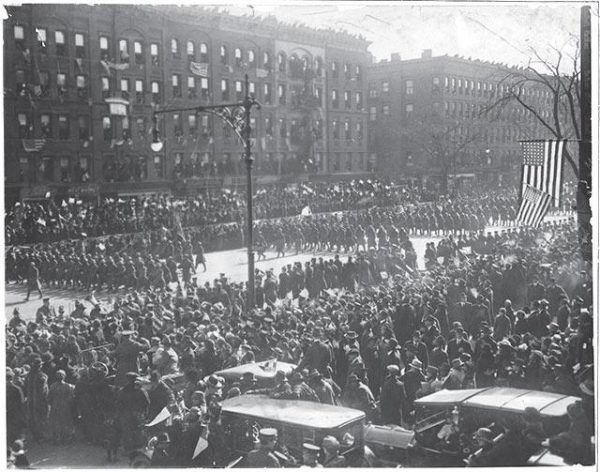
The late Nathan Huggins of Harvard concurred. “All agreed that the war had much to do with the changes. All Americans had just participated in a moral crusade to make political justice and democracy a reality to men throughout the world. American Negroes had joined in that struggle with the conscious intent of making this their fight too. They had made their contribution as military men, they had served their nation, and now they would insist on being treated like full citizens.”
“The shame that black men felt about their past was a measure of how much they had drunk up the values of the white American world around them,” Huggins added. But in the north, the tables were turning. Huggins:
“Men who sensed that they were slaves to moral codes…found Harlem a tonic and a release. Harlem Negroes’ lives appeared immediate and honest….It was not merely that jazz was exotic, but that it was instinctive and abandoned, yet laughingly light and immediate—melody skipping atop inexorable driving rhythm…bodies writhing and rolling with a drum and a beat as they might never do with a woman or a man.”
Louis Armstrong became part of the “New Negro” generation less bound by slave legacy. His Crescent City compatriots—Punch Miller, Henry Rene, Buddy Petit—all pushed the envelope, playing “figurations” beyond the written parts. “Play the lead!” Joe Oliver continually implored Armstrong. But when Louis delivered his going-nowhere swing on his “Chimes Blues” solo, Gary Giddins pronounced, “I heard the future.”
Louis got it, in part, from “the feeling and the originality that the musicians he admired in his youth brought to their art and craft,” wrote Dan Morgenstern. “It was truly new, and they had made it up; nothing like it had been heard before.”
That New Orleans “thang,” taken off muddy District streets, from dim back rooms and shaking street parades, would pound through American music from that point on. Wrote Tom Piazza in Why New Orleans Matters, “The thing that made all those second-lines and funeral parades and all that house-rocking New Orleans music so profound was obviously not that they came from a mansion on Easy Street. They were defiant gestures of grace and humanity in the teeth of mortality and the worst hard times. The triumph over the pain, the recognition of life’s brevity, is what makes the reaffirmation beautiful.”
Today, that music lives on in the music of Tuba Skinny, Bria Skonberg, Chicago’s Fat Babies, Paris’ Hot Sugar Band, and a bounty of hot bands and Lindy Hoppers that have popped up as far away as Seoul, Korea.
One of my favorite adages comes from Henry David Thoreau: “One generation abandons the enterprises of the last, like stranded vessels.” This seems perennially true—except when it comes to the American music of freedom, which won’t go away. There is a reason. As Sidney Bechet has written about “Go Down Moses“, “It was years they’d been singing that. And suddenly there was a different way of singing it. You could feel a new way of happiness in the lines. All that waiting, all that time when that song was far-off music, waiting music, suffering music; and all at once it was there, it had arrived. It was joy music now. It was Free Day…Emancipation.”
World War I, however, brought not only jubilation, but denigration—and more suffering. The “Red Summer” of 1919 saw white supremacist riots in more than three dozen American cities. The big one in Chicago broke out simply because a black boy inadvertently swam into a white swimming area at a segregated beach. Thirty-eight people died, and up to 2000 people lost their homes.
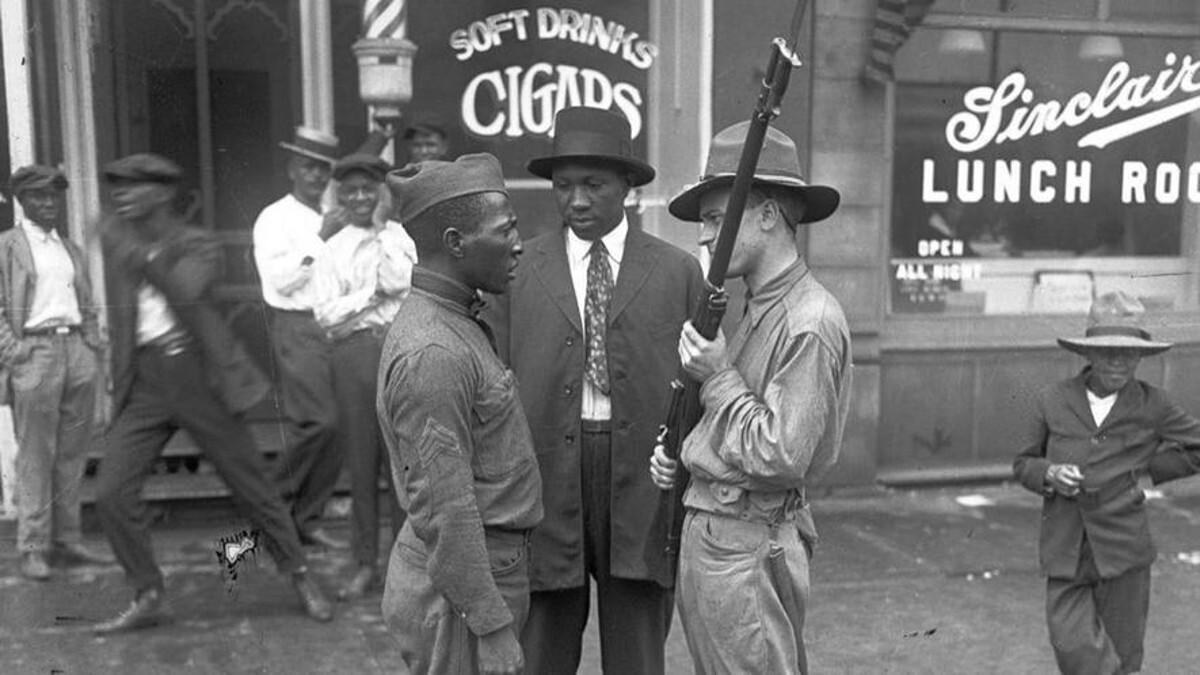
The Chicago riot came on, in part, as many thousands of southern blacks moved into the South Side, bringing job and housing conflicts with European immigrant populations. When Prohibition went live the next year, it immediately brought more conflict; in his Prohibition film, Ken Burns points out that “just minutes after Prohibition went into effect, six masked bandits with pistols emptied two freight cars full of whiskey. Warehouses were raided; a truck full of bourbon is hijacked.”
As is commonly known, Prohibition immediately made “criminals” out of the millions of Americans who violated the Volstead Act. Over the Prohibition decade, Chicago saw over 500 mobster murders, and few of the perpetrators were ever apprehended. Wrote the journalist/historian Daniel Okrent, “Prohibition was the finishing school, the college, and the graduate school for the criminal syndicates of America.”
Al Capone owned as many ten thousand speakeasies and raked in about $60 million a year from running illegal booze—much of it from beer. What got him in the end was publicity. “Capone cultivated the press as if he were running for office,” wrote Geoffrey Perrett. In Capone’s own words, “It was my own fault. Publicity: that’s what got me.”
But along the way, Capone, whom the NYT called “the monstrous symptom of a disease which was eating into the conscience of America,” made an indelible contribution to the cause of jazz: He directed his brother Ralph to run the Capones’ finest nightclub and to hire black musicians only. Capone, it turned out, felt a kinship with black populations, whom he considered as shut out and persecuted as his own Italian immigrant cohort. He especially favored New Orleans players.
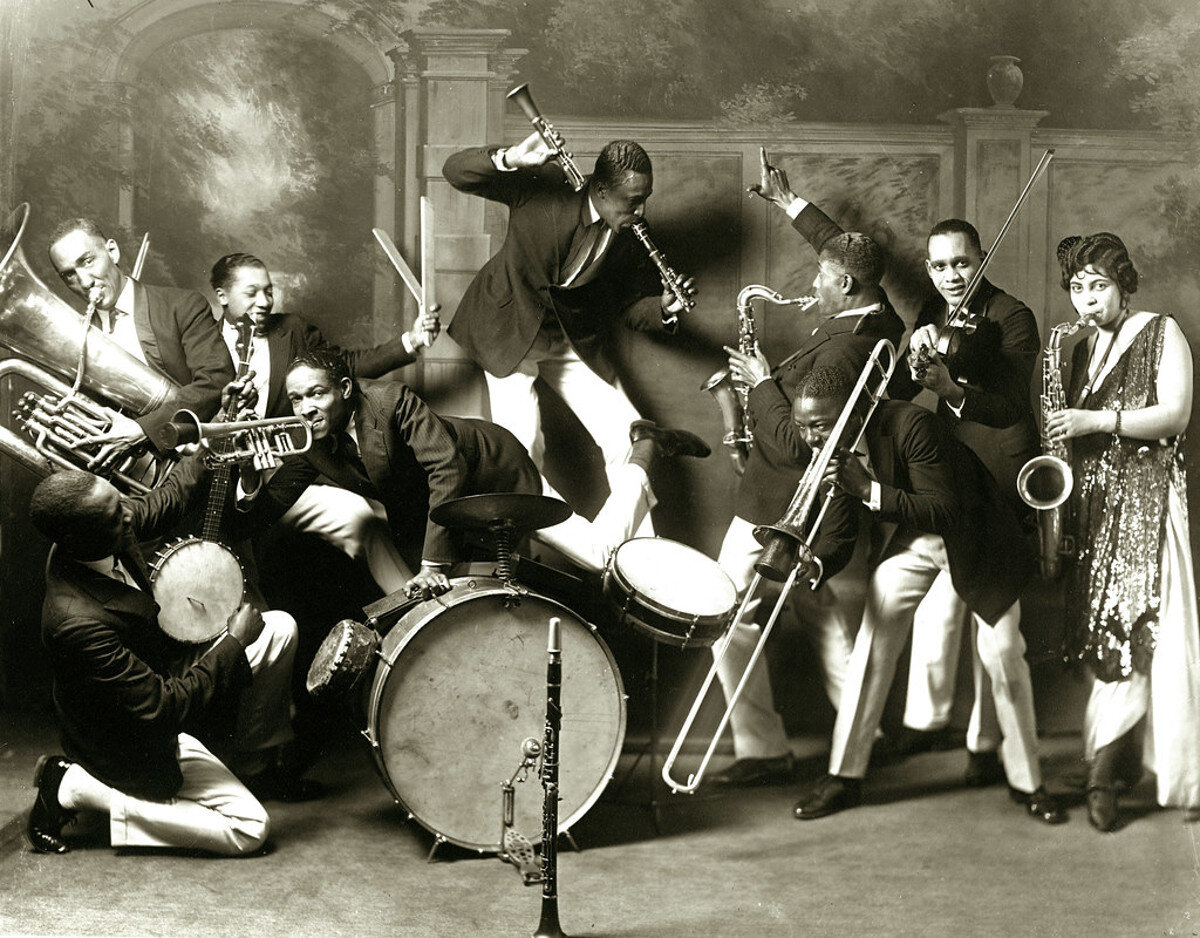
“Not only did the violent lawlessness of the ruling whites turn Italians inward until the 1930s, but it also made the Sicilians find common bonds with Black Louisianans as the exploited, maligned, and persecuted,” wrote Bruce Boyd Raeburn of Tulane. “For the white elite, Sicilians were considered to be ‘non-white,’ as were Hispanics, Jews, Creoles of color, and African Americans.”
But amidst the gunfire, corruption, and booze, jazz music got people dancing—another holdover from New Orleans, which as early as 1841 boasted over eighty ballrooms or dance venues. “The women…were willing to walk barefoot through two miles of mud to get to a dance in the days before New Orleans had sidewalks,” wrote the scholar Henry Kmen. A principal cause, Kmen states, was the hardship of communication among the many nationalities living by the Gulf. “Dancing easily leaps language barriers,” Kmen wrote, “and so its momentum increased because it could be enjoyed by all.”
With the conflict and riots, an even newer music arrived: the blues—which “like spirituals, were prayers. One was praying to God and the other was praying to man,” recalled Bechet. W.C. Handy, Jelly Roll Morton, and others had begun publishing blues during the nineteen-teens. The music had come off plantation ring shouts and field hollers—from human emotion, if not composition.
That feeling began shouting off Okeh discs in 1920, with Mamie Smith’s “Crazy Blues”—the first recorded blues. Willie “the Lion” Smith, the pianist of record, recalled the tune as “an old bawdy song played in the sporting houses.” But at this point, the blues had gone from back porch to tent show; Mamie’s performance, accompanied by a hot-jazz front line, brought the blues front and center through her vaudeville style. The record sold 75,000 copies during its first two months of circulation, bringing OKEH to record other female blues vocalists.
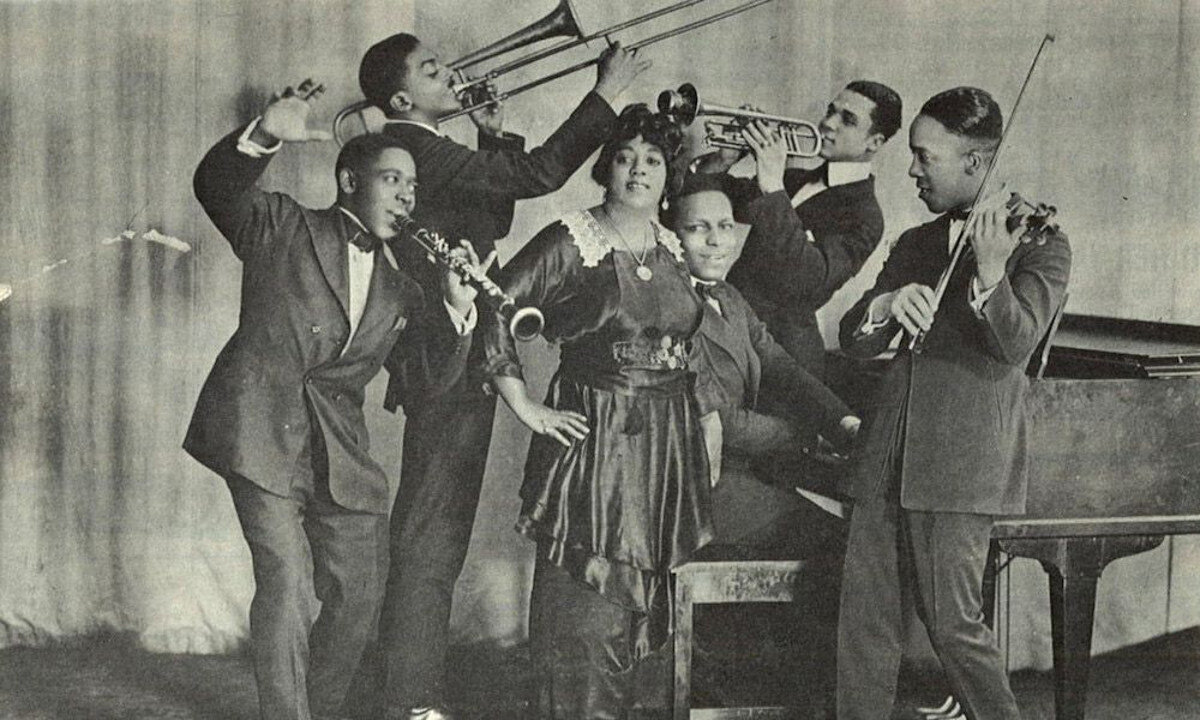
These women, many part of the black migration, “came of age” as women got the vote—also in 1920.
But right after the war, as jazz and the blues began growing in Chicago’s South Side, so did racism from returning white soldiers. It was, the History Channel tells us, “centered upon the 380,000 black veterans who had just returned from the war. Because of their military service, black veterans were seen as a particular threat to Jim Crow and racial subordination.”
Prohibition turned up that heat with a revived Ku Klux Klan, which had now focused beyond African Americans to immigrants in general. The Klan loathed jazz music since it encouraged racial mingling—long since going on in New Orleans and now thriving in Chicago’s “black and tans.”
But as has been true for most of our “We the People” history, the Klan were outliers and exclusionists. In fact the black and tans represented humanity. New York’s Amsterdam News asserted that “the (black and tan) night clubs have done more to improve race relations in ten years than the churches, white and black, have done in ten decades.” Willie the Lion recalled, “There was a lot more mixing of the races in Chicago at that time than there was in New York. I sure found the ‘toddlin’ town’ to be real friendly.’”
Among the Klan’s top targets were Germans, whom America had fought during the war and who had a fair monopoly on beer production throughout the states. Klansmen could combat immigration in the guise of “supporting” Prohibition—which included beer. But they also fought other “non-American” groups—Mexicans, Catholics, and all foreigners—many of whose social cultures revolved around drinking. In effect if not by intent, much of the Prohibition agenda was white nationalist.
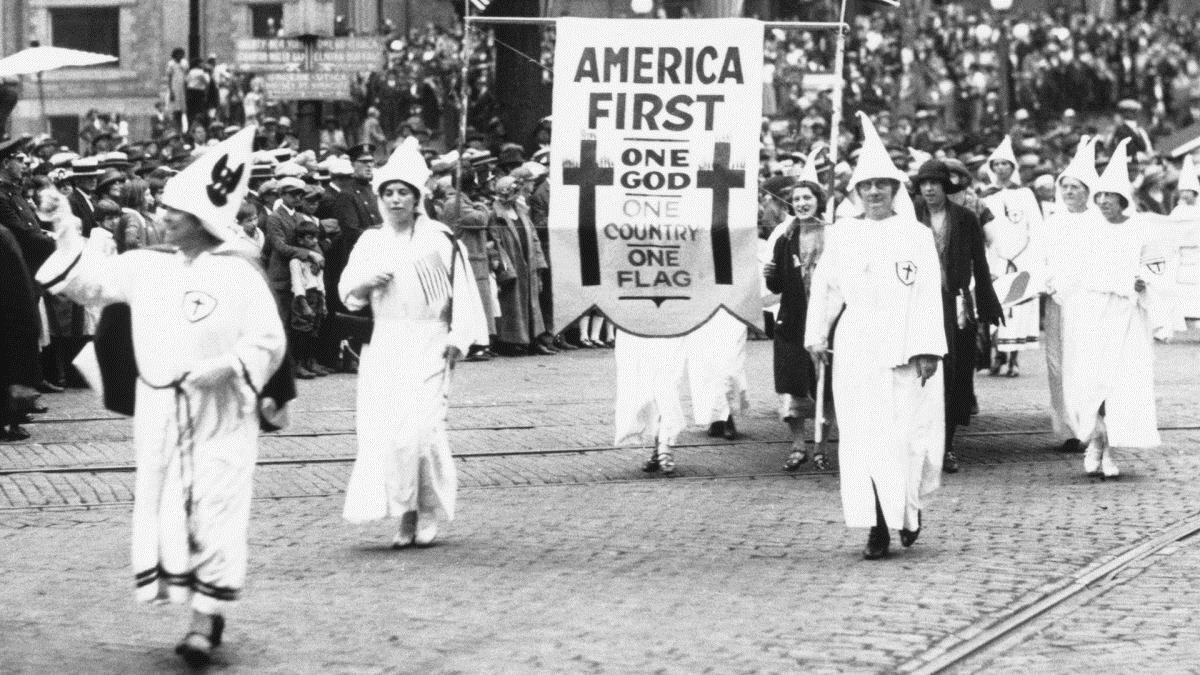
One huge problem was the shortage of enforcers. With little budget to hire them (Americans didn’t really want to pay for Prohibition), the Feds began recruiting “citizen enforcers,” and the Klan raised their hands right away. They wanted to purge the “ratty,” booze-swilling, non-white communities, which had grown immensely since the late 1800s. Between 1920 and 1925, membership in the Klan grew from two to five million members.
My favorite definition of racism comes from the great aunt of the “Jazz Baroness” Pannonica “Nica” de Koenigswarter—mentor and benefactor to Charlie Parker, Thelonious Monk, and others. When asked what she thought about racism, the great aunt grunted, “The office boy has got to kick the cat downstairs.”
But jazz music is whole-body dance music, not wafted down from Piazza’s “mansion on easy street” but brought up from the earth, from the crucible of hard times. As the longtime BSO director Serge Koussevitzky noted, “Jazz comes from the soil, where all music has its beginning.”
And as the jazz writer Ted Gioia has recently written, “Outsiders are especially well positioned to disrupt old traditions and create new ones, for the simple reason they have the least allegiance to the prevailing manners and attitudes of the societies in which they live. In music, we crave this disruption and the excitement it brings. Again and again, we turn to bohemians, rebels, and others who operate on the margins.”
Read: An interview with Ted Gioia on Music: A Subversive History
So in spite of our acting out against blacks and immigrants—coming around again today—our native music of emancipation has survived, grass poking up through hard sidewalks. In 1920s Harlem, our thirst for living and dancing brought crowds to Connie’s Inn, the Savoy, Small’s Paradise, and Cotton Club. As the broadcast journalist Eric Burns recalls about Harlem streets, “Long after the cascading lights of Times Square had flickered out, these boulevards were ablaze. Lines of taxis and private cars kept driving up to the glaring entrances of the nightclubs…. The legend of Harlem by night…, throbbing to the beating of drums and the wailing of saxophones, cosmopolitan in its peculiar sophistications—crossed the continent and the ocean.”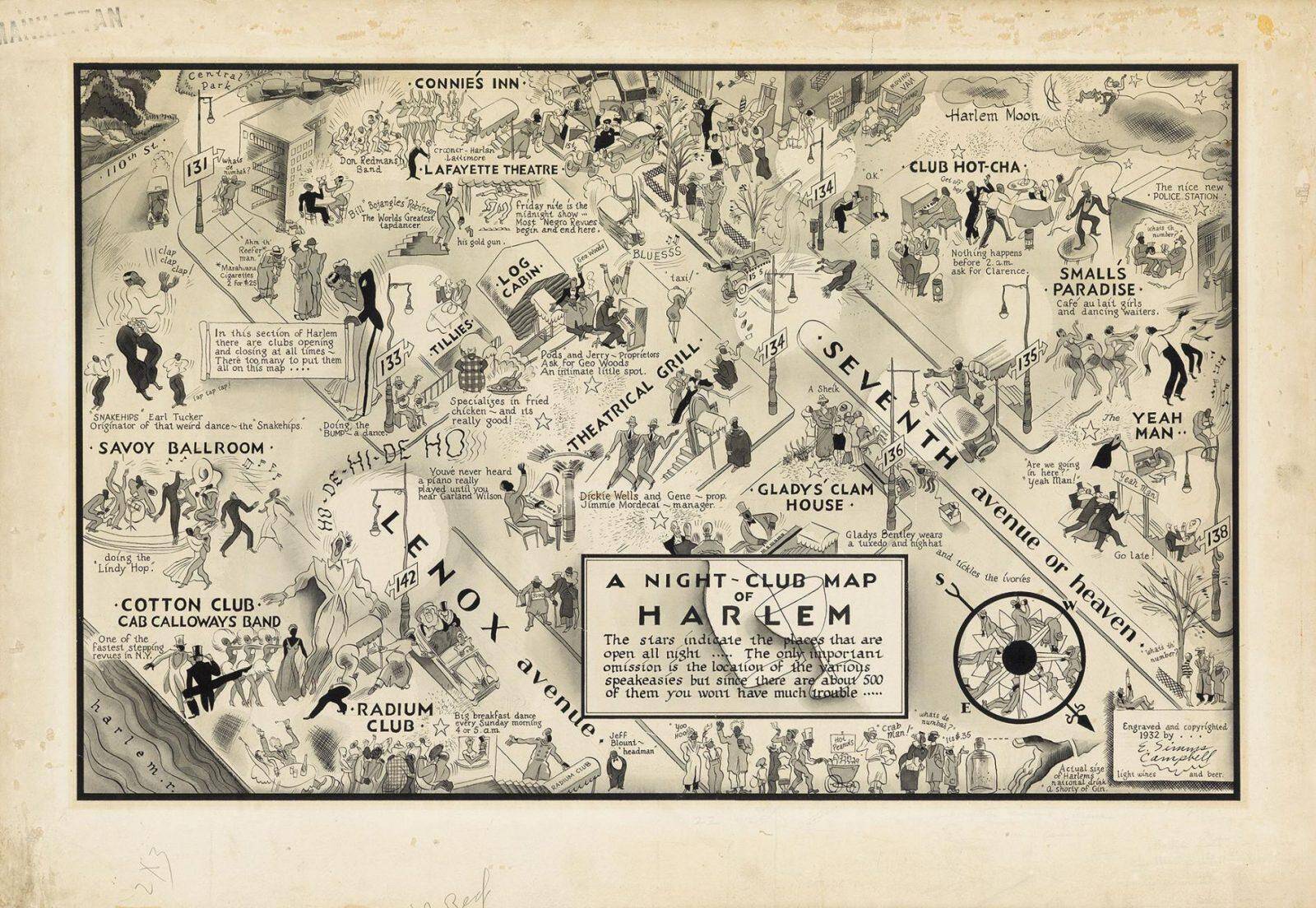
Downtown, at Broadway and 63rd Street (hard by today’s Lincoln Center, where Wynton Marsalis holds court), the 1921 breakaway black musical Shuffle Along ran for nearly 500 performances and opened the gates for nine more black shows over the next three years. With Eubie Blake at the keyboard, Shuffle Along helped bring the rise of Harlem Stride piano. As Lew Shaw has written in this newspaper, the show “introduced white New Yorkers to black music, theater, and entertainment and helped generate the white fascination with Harlem and the African American arts that was so much a part of the Harlem Renaissance.”
Read: The Harlem Renaissance: Guide to Historic Jazz Clubs
In Chicago, amidst the bootlegging and gun fire, King Oliver’s Creole Jazz Band, with a 22-year-old Louis Armstrong on second cornet, opened at the Lincoln Gardens on Cottage Grove Avenue, on the South Side near the Lake. At that time—in 1923—most Americans thought of jazz as white music, emanating from the Original Dixieland Jazz Band, the New Orleans Rhythm Kings, or Paul Whiteman.
The ODJB’s breaking 1917 release “Livery Stable Blues” helped enforce this belief. And because the phonograph industry operated mostly in the Northeast, “Consideration of the cultural context from which jazz had originally emerged…was seemingly out of the question,” Bruce Raeburn has written.
But the white players shook their heads when they heard the Oliver band. The guitarist Eddie Condon was there: “Notes I had never heard were peeling off the edges and dropping through the middle; there was a tone from the trumpets like warm rain on a cold day…. The music poured into us like daylight running down a dark hole.” White players by the carload flocked to hear the Oliver band, sitting way down front. And today, new Millennial bands play Oliver’s tunes with buzz and hope, drawing in dancers by the thousands.
Six years after Oliver began his Lincoln Gardens stint, the stock market crash kicked off the Prohibition repeal process. People in hard times needed a drink. Not only that, but according to Eric Burns, “There was never a time when a majority of Americans supported Prohibition, never a time when they wanted, en masse, to deny themselves the satisfactions and consolations of beer, wine, and whiskey.” In 1920, only 38 percent of Americans favored Prohibition enforcement; by 1930, that number had dropped to 28 percent.
Although the movement had begun as a protest against alcohol’s toxic effects, the law effectively told people how to live their lives; it became an affront to the democratic concept of self-rule. In this free nation, it was bound to fail. “The drys were the most inflexible people I have ever come across,” stated the historian Catherine Gilbert Murdock. “It is completely their fault that Prohibition failed. They refused to give in, to move a millimeter…. In their extremism, they eliminated all moderate support.”
Percy Andreae, an anti-Prohibitionist, wrote in 1915 that “The fight for prohibition is synonymous with the fight of a certain religious sect…for the supremacy of its ideas….part and parcel of their lugubrious notion of Godworship which they eventually hope to impose upon the rest of humanity; a Sunday without a smile, no games, no recreation, no pleasures, no music, card-playing tabooed, dancing anathematized, the beauties of art decried as the impure—in short, this world reduced to a barren forbidding wilderness in which we, its inhabitants, are to pass our time contemplating the joys of the next.”
His words tie directly into the foundation of jazz music, which brings the joy of this world. “The Saturday Night Function is a ritual of purification and affirmation,” expounds Albert Murray in Stomping the Blues. “What the blue devils of gloom and ultimate despair threaten is not the soul or the possibility of everlasting salvation after death, but the quality of everyday life on earth.” Anyone who has marched in a New Orleans second line will know Murray’s meaning.
The racism could cluck, and denigration might fester. But the freedom, humanity, and struggle of African Americans moved American culture. Eric Burns cites the writing of W.E.B. DuBois, describing “the peculiar spiritual quality which the Negro has injected into American life and civilization…a certain spiritual joyousness; a sensuous, tropical love of life, in vivid contrast to the cool and cautious New England reason; a slow and dreamful conception of the universe; a drawling and slurring of speech, an intense sensitiveness to spiritual values….”
Or from the great Danny Barker of New Orleans: “You got to pluck that bass or play that instrument a certain way, a certain lilt. Nobody’s in a hurry—all that runnin’ and jumpin’. No, you take it easy.”
Read: Prohibition and the Rise of Jazz, Part One
Peter Gerler has written about jazz since the early 1990s. He has been published in American Legacy, DownBeat, JazzTimes, Humanities, The Boston Globe, New Orleans Gambit, Moultrie Observer, WBGO, Upbeat, www.jazz.com, www.nejazz.com, and other venues. He has presented on early jazz at Satchmo Summerfest, River Road African American Museum, Classic Jazz at Lincoln Library, Cambridge Center for Adult Education, Newton Lifetime Learning, and numerous senior facilities in the Boston area. Visit him online at www.jazztalks.com.





